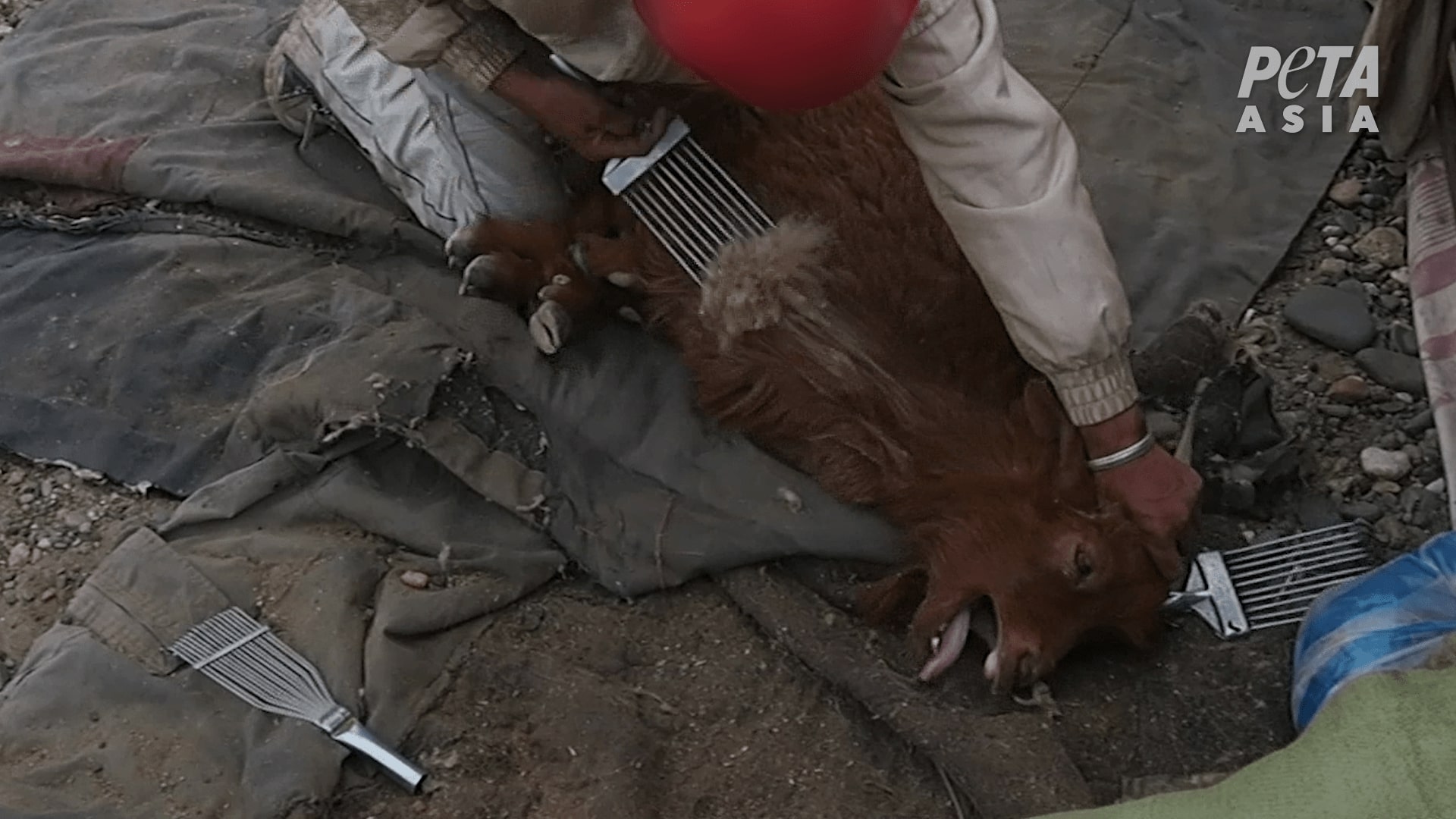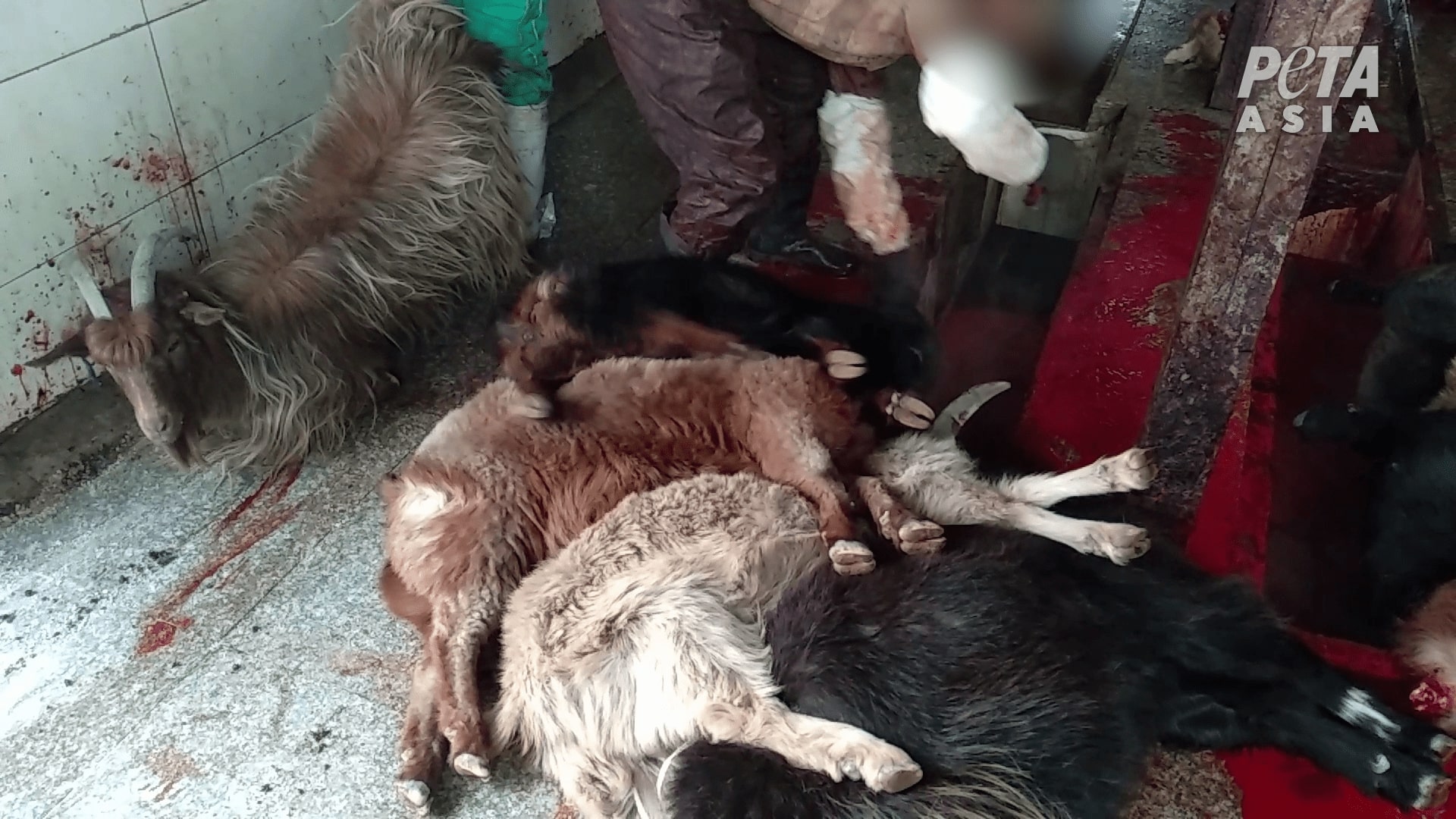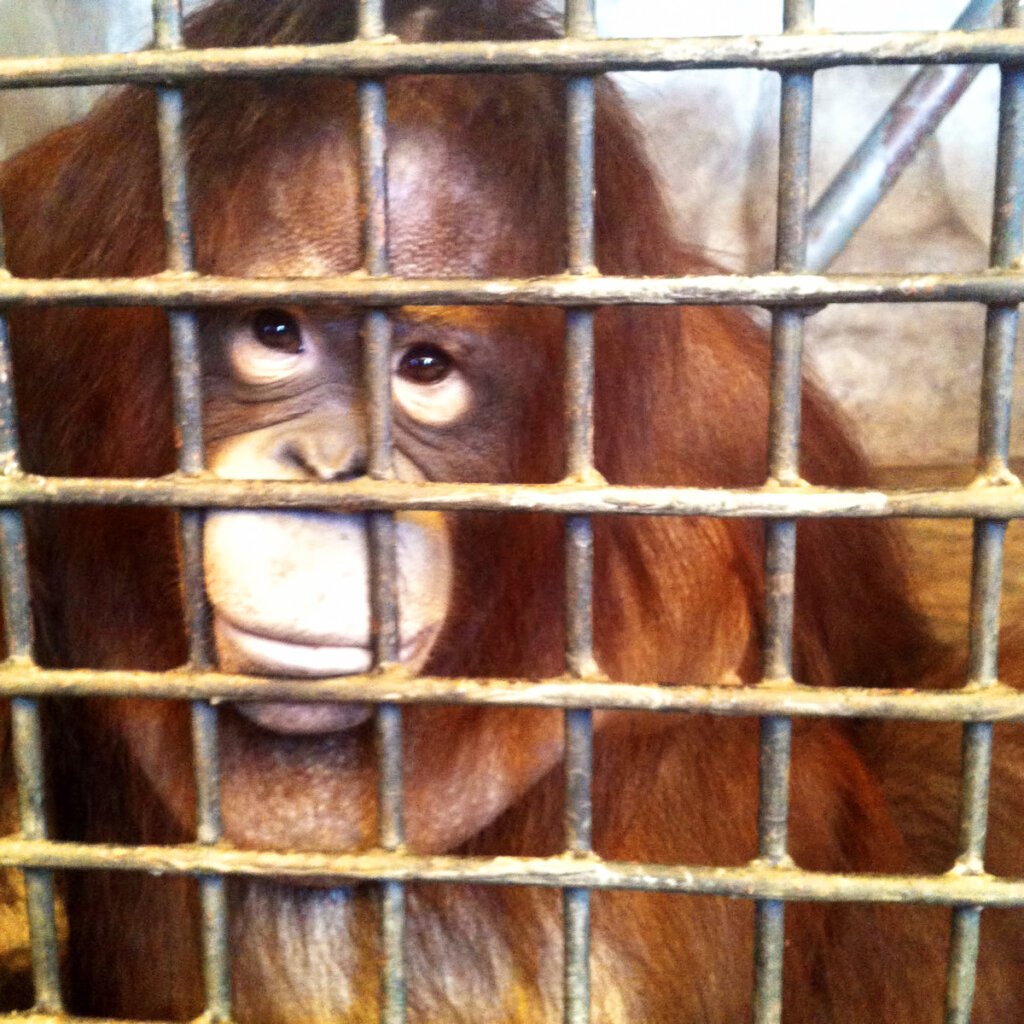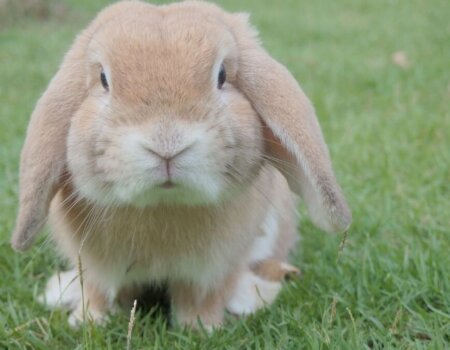The Cruelty Behind Cashmere
Found in knitwear like scarves and sweaters and home furnishings such as bedding and throws, cashmere is made from the soft undercoat of goats who are cruelly abused and violently killed.
As much as 90% of all cashmere comes from China and Mongolia, and the rest is from other countries including India, Iran, and Tibet.
Goats Suffer for Cashmere
Cashmere is made by breeding and farming goats and tearing out their hair using sharp metal combs. One goat produces, on average, only 250 grams of hair that can be used for cashmere each year – so little that it takes the hair of six goats to produce just one cashmere jumper.
Workers typically “comb” or shear goats for cashmere once a year in the spring moulting season of April and May. According to one farmer, shearing is “very stressful” for the animals and robs them of natural insulation, leaving them vulnerable to cold temperatures and illness.
In 2019, PETA Asia investigators visited cashmere industry operations in China and Mongolia – the world’s top cashmere exporters – and uncovered extreme cruelty to and violent killing of goats used for cashmere on every single farm visited.
Goats were filmed screaming in pain and fear as workers tore their hair out. They were left with bloody cuts from the hair-removal process and given no pain relief or veterinary care.

More Than a Haircut – Cashmere Kills
Goats no longer deemed profitable by the cashmere industry endure slow, agonising deaths. At one abattoir in China, eyewitnesses saw workers hit animals on the head with a hammer in an attempt to stun them.
In Mongolia, workers were seen dragging goats by one leg onto the abattoir floor before slitting their throats in full view of other goats. They were left to bleed out on the filthy floors, and some were seen still moving a full two minutes later. After they’re ruthlessly killed, their flesh is sold as cheap meat.

Cashmere Is Also Terrible for the Planet
Cashmere also has the most destructive environmental impact of any animal-derived fibre. Because goats used for cashmere must consume 10% of their body weight in food each day and they eat the roots of grasses, which prevents regrowth, the industry is a significant contributor to soil degradation followed by desertification.
Already, 65% of Mongolia’s grasslands are degraded and 90% of the country is in danger of desertification, which has resulted in some of the world’s worst dust storms on record and air pollution dense enough to reach North America.
Vegan Cashmere Upgrades
Luckily, vegan cashmere is luxurious, kind, and also way better for the Earth. A growing number of designers and retailers are offering super-soft, warm vegan knitwear, which is kinder to animals and the environment. Check out the list of “PETA-Approved” vegan fashion here.
You Can Help Goats
It’s easy to do your part to spare goats – and other animals – suffering. Simply do the following:
- Refuse to buy cashmere. Always check the label when you’re shopping, and if it includes the word “cashmere”, leave the item on the shelf.
- Look out for other animal-derived materials: sheep, rabbits, alpacas, and other animals are victims of the fashion and soft-furnishings industries, too, so please also steer clear of wool, mohair, angora, and any fibre stolen off animals’ backs.
- Educate others! Share this page with your friends and family. Let everyone know about the cruelty behind cashmere jumpers.
Help Animals in 2025: Renew Your PETA Membership!




